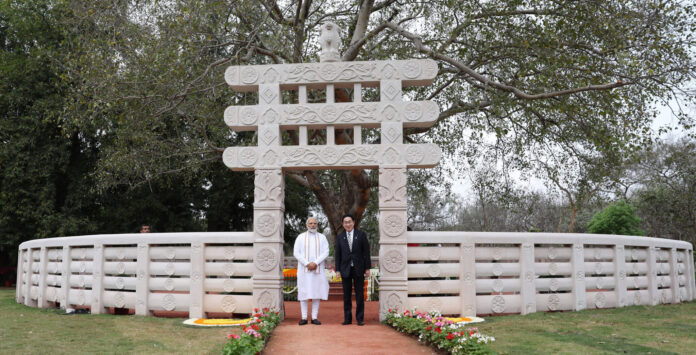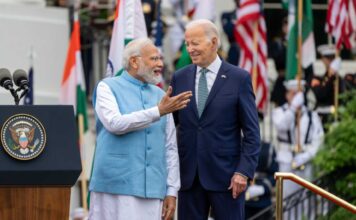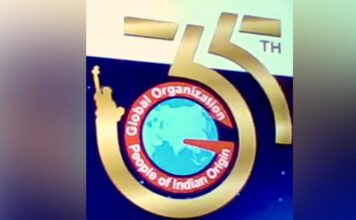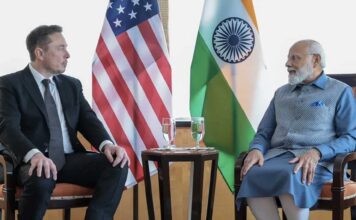
Dawn of a new era in Indo-Japan relationship
By S. Majumder
Japanese Prime Minister Fumio Kishida’s visit to India on March 20 comes after Japan refused to send its Foreign Minister to the G-20 summit held in New Delhi earlier this month. The move has surprised many in diplomatic circles.
The assassination of former PM Shinzo Abe had closed a whole chapter in Indo-Japan relationship. Abe shared a personal bond with Prime Minister Narendra Modi which was evident in an obituary written by him titled: My Friend Abe!
Though Kishida was handpicked by Abe himself as a potential successor, much of his work was undone after his assassination. Kishida’s last visit to India as a Prime Minister of Japan was lackluster. He committed a big increase in Japanese aid, from $33 to $42 billion over the next five year during that visit but failed to enthuse the corporate sector, as he remained silent on Japanese investment in India.
Abe’s legacy
Modi-Kishida bonding could open a new chapter in Indo-Japan relationship. PM Modi indulging Kishida clearly shows that India is deeply interested in rejuvenating that bond again.

PM visits Buddha Jayanti Park with the Prime Minister of Japan, Mr. Fumio Kishida, in New Delhi on March 20, 2023.
India is an important member of Quad aimed at balancing China in the Indo-Pacific, where Japanese territorial and sovereign interest lies. On the other hand, Japan is insisting on India to shed her neutrality and persuade Russia on Ukraine war, an entrenched western line Japan is toeing.
“Tokyo will further enhance Japan-India special strategic global partnership in order to strengthen Washington Indo-Pacific strategic framework,” Kishida said during his visit, sending a strong message to China. 
Abe was the longest serving PM in Japan from 2012 to 2020. Indo-Japan relationship progressed leap and bound during his tenure encompassing economic engagement and financial assistance to improve India’s infrastructure.
His view for Japan’s becoming a global power and reliance on partnership with India for diversified multilateral dynamism aimed at muscles flexing abilities to counterweight China, brought the two nations into a close bonding. The new era of Japan-India relation witnessed a paradigm shift from mere bilateral economic relation to special strategic relation, including defense and global partnership. 
The relationship extended to joint partnership for economic development in third countries including projects such as Development of Asia- Africa Growth Corridor (AAGC), joint cooperation for the development of Chabahar Port in Iran, strengthening of defense cooperation for national security with MoU in Defense cooperation.
This new era provided opportunities to give a strong spine to India-Japan special strategic and global partnership in political security.
Abe’s foreign policy harped on combating China’s rise in power in the geopolitical landscape by increasing self-defense of Japan against riskier nations in the region like China, Russia and North Korea and playing an active role for freedom in the Indo-Pacific with likeminded democracies. He relied upon India as a balancing power in the Indo-Pacific.
In his book titled, “Towards a beautiful country: my vision for Japan (2007),” Abe advocated strong partnership with India.
But Abe’s legacy is caught into divisive characteristics in local politics. To the supporters, he was realistic. He wanted to build a strong Japan, which can protect Japanese people and culture, in a risky neighborhood. To his critics, he was obsessed with autocratic democratic power, which let him violate democratic norms and deny Japan’s imperial colonialism.
Abenomics
For India, Japanese investment has been crucial for the new era of industrialization and “Abenomics” became the new template for the trigger. It placed India in the global map of the automobile industry and transformed Indian manufacturing in technology oriented and supply chain dynamism.
During Abe’s regime from 2012-2020, Japanese investment in India grew leaps and bounds. It increased from $2,802 million in 2012 to $4,569 million in 2020. Japanese investment in China declined during Abe’s regime. It slipped from $13,479 million in 2012 to $12,088 million in 2021.
According to Global Times, a Chinese premium media, “Any loss to China, is a gain to India”.

PM Modi attends delegation level talks with the Japanese PM Kishida at Hyderabad House
However, with the end of the Abe regime, Japanese investment in India declined. In the year 2021 alone, Japanese investment in India declined by 24.4 percent. This was despite the fact that overall Japanese investment overseas increased in 2021.
Nevertheless, the fall in Japanese investment in India should not demonstrate the downturn of Japanese sentiment. The euphoria for investment in India continues to float. According to the latest JBIC survey in 2022 – Overseas business operation by Japanese manufacturers, India topped as the investment destinations for Japanese preferences in the next 3 years. It has outsmarted China, which is now displaced to second rank for Japanese preferences. The spur in Japanese sentiment could be due to India’s bounce back after Covid pandemic that left many nations in a tailspin.
In all, it is just a matter of time when Kishida takes over Abe’s legacy in full to carry forward his aim for strengthening Japan’s self-defense and strategic partnership with like minded democracies to counter China, where India will likely play an active role.
Subrata Majumder is a former advisor to JETRO – Japan External Trade Organization, under The Ministry of Economy, Trade and Industry (METI), Government of Japan.
Disclaimer: The views expressed are not necessarily those of The South Asian Times












